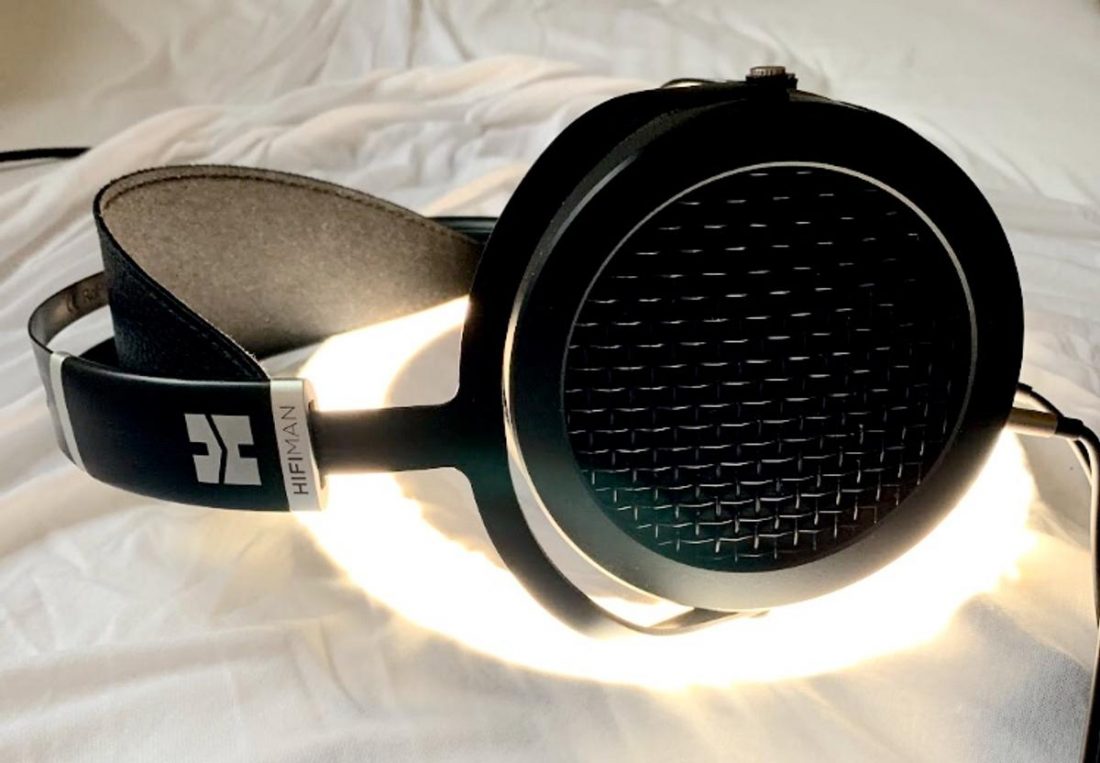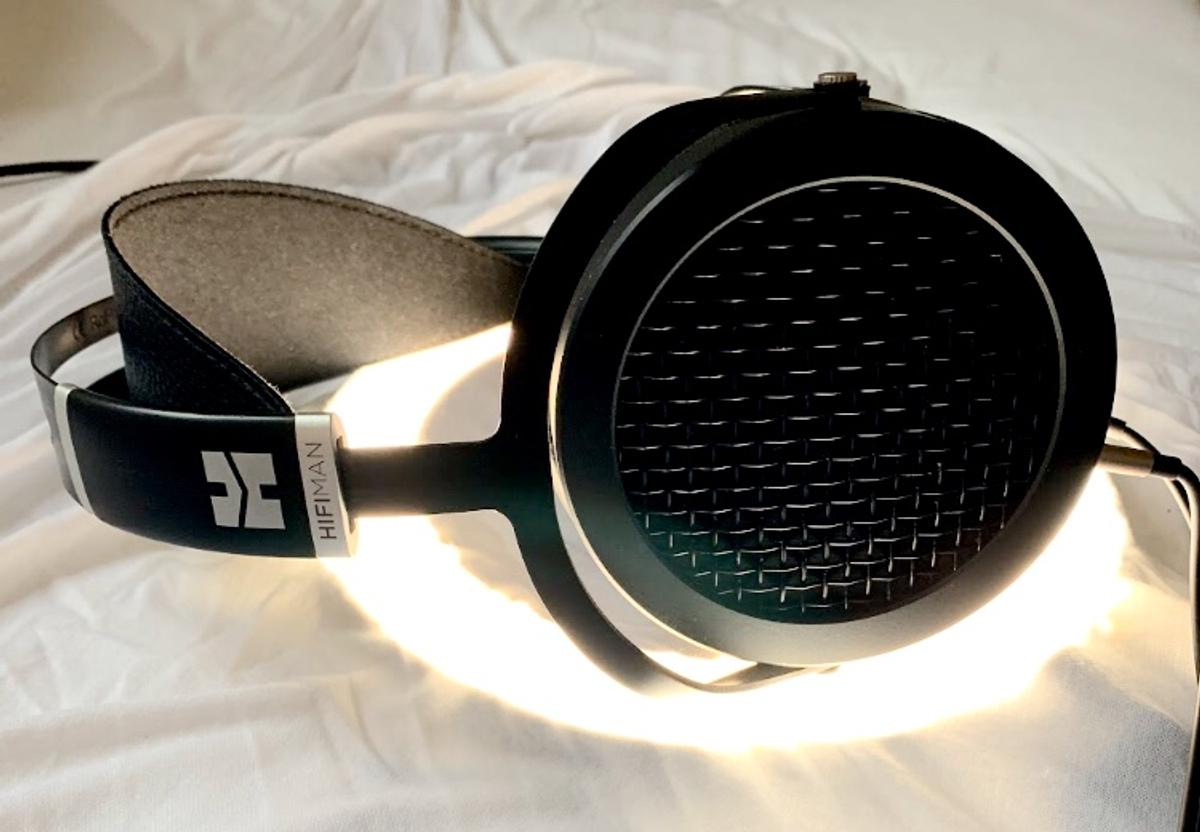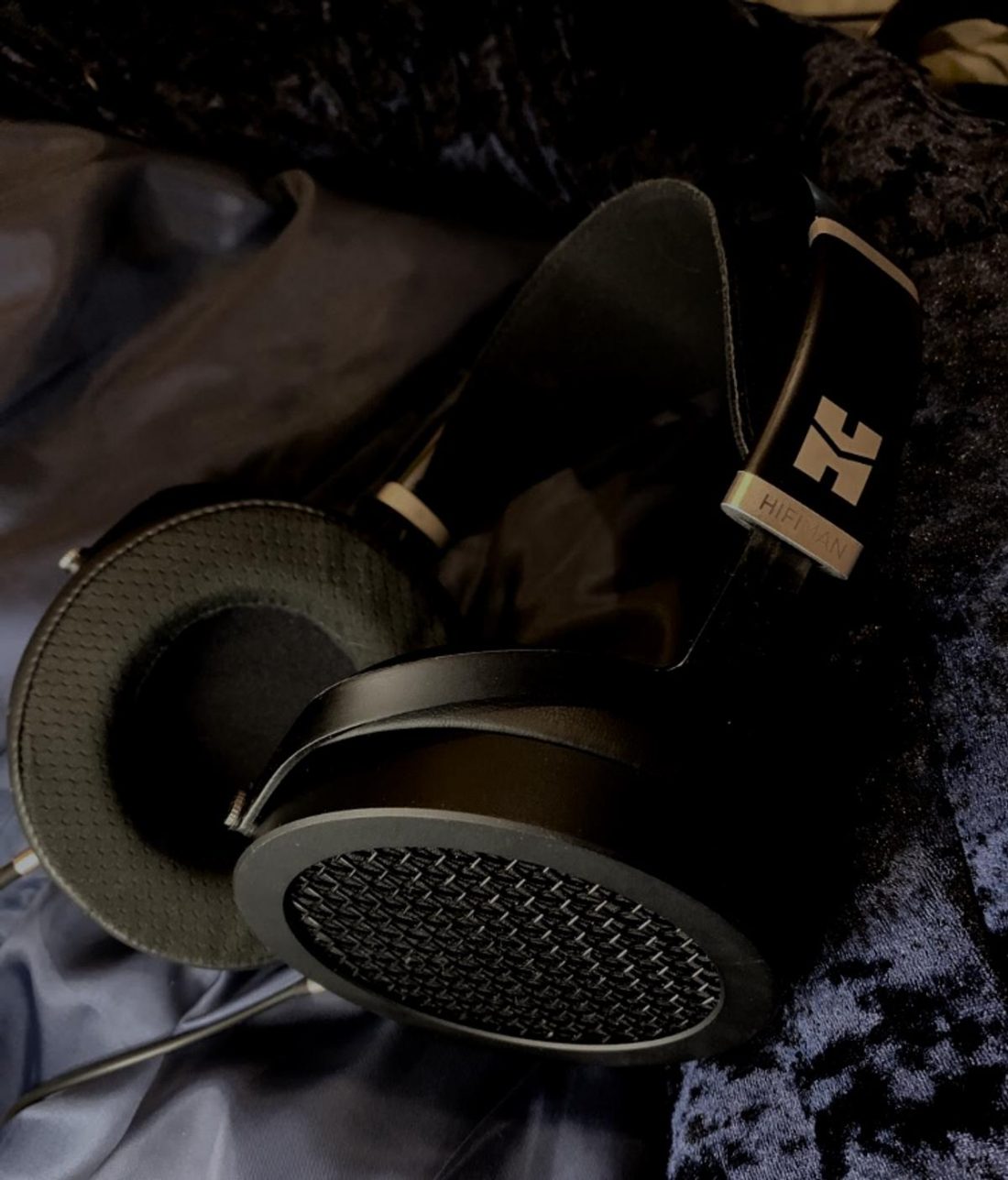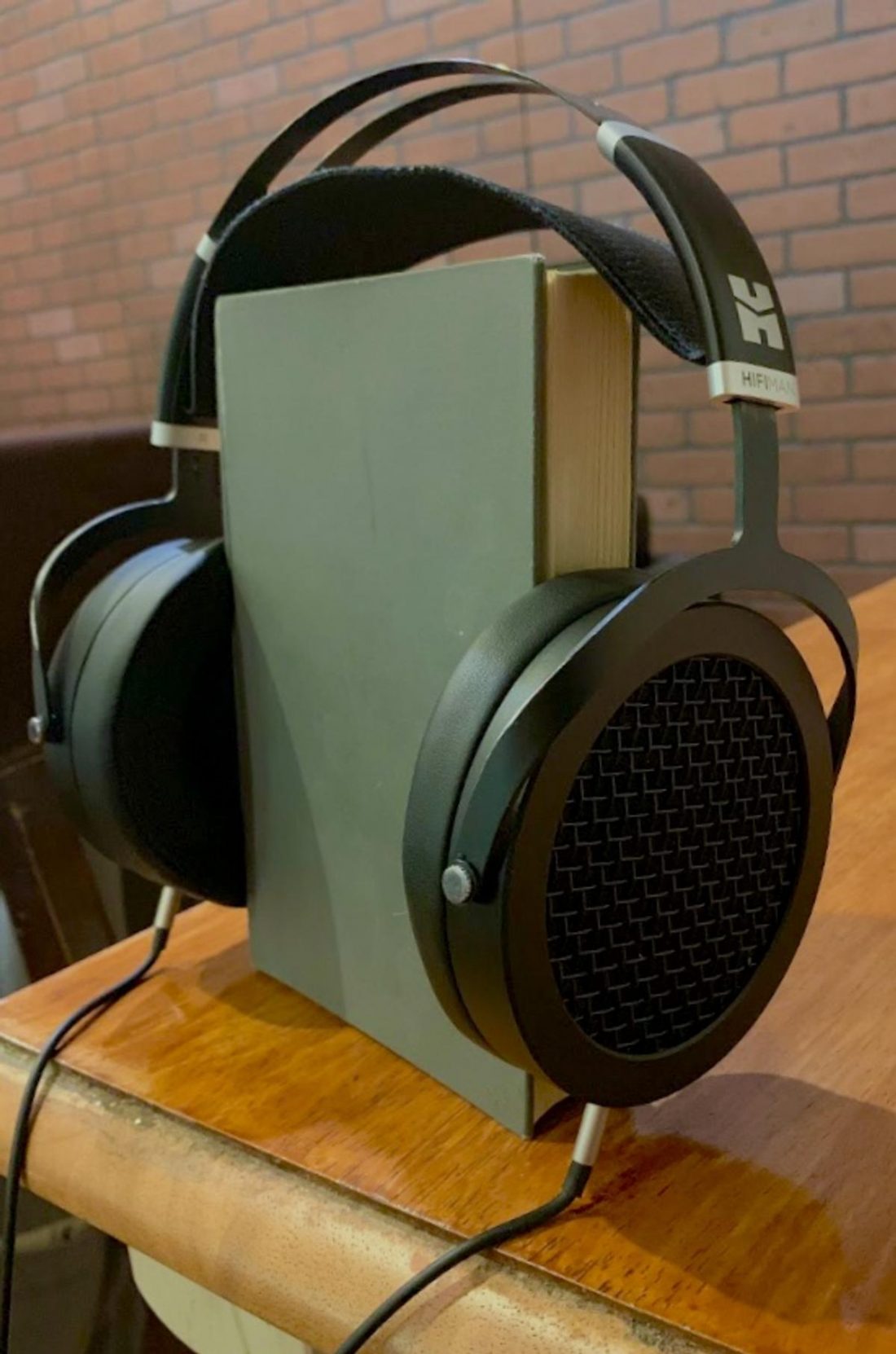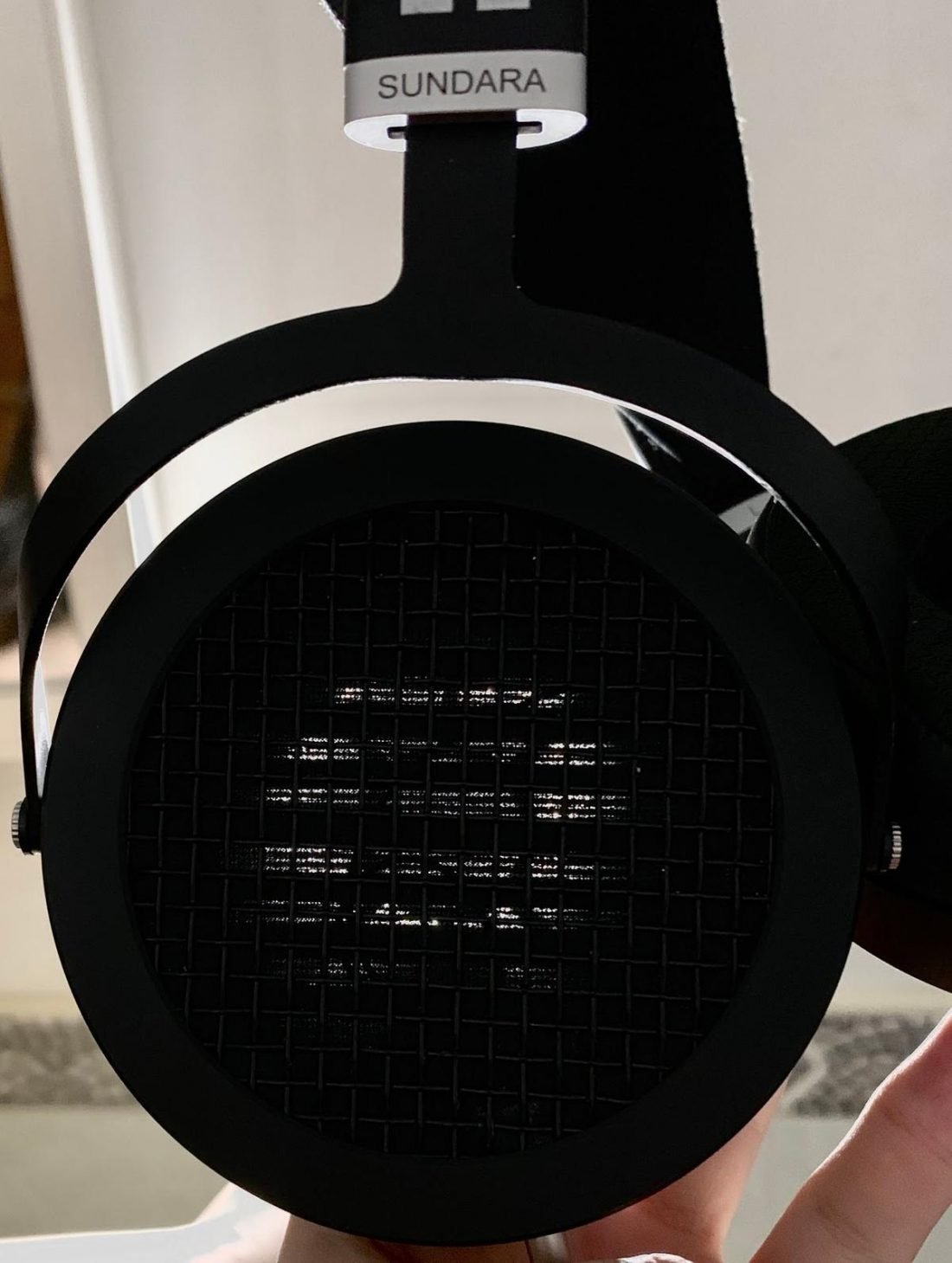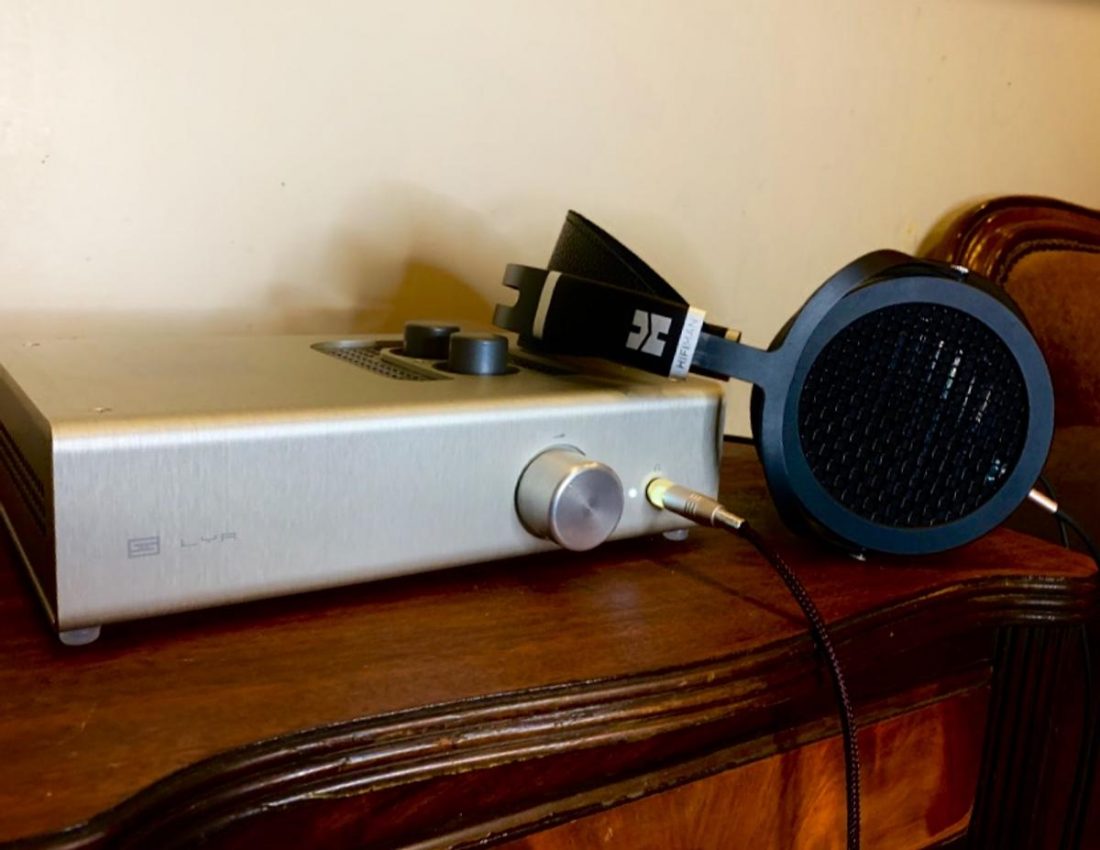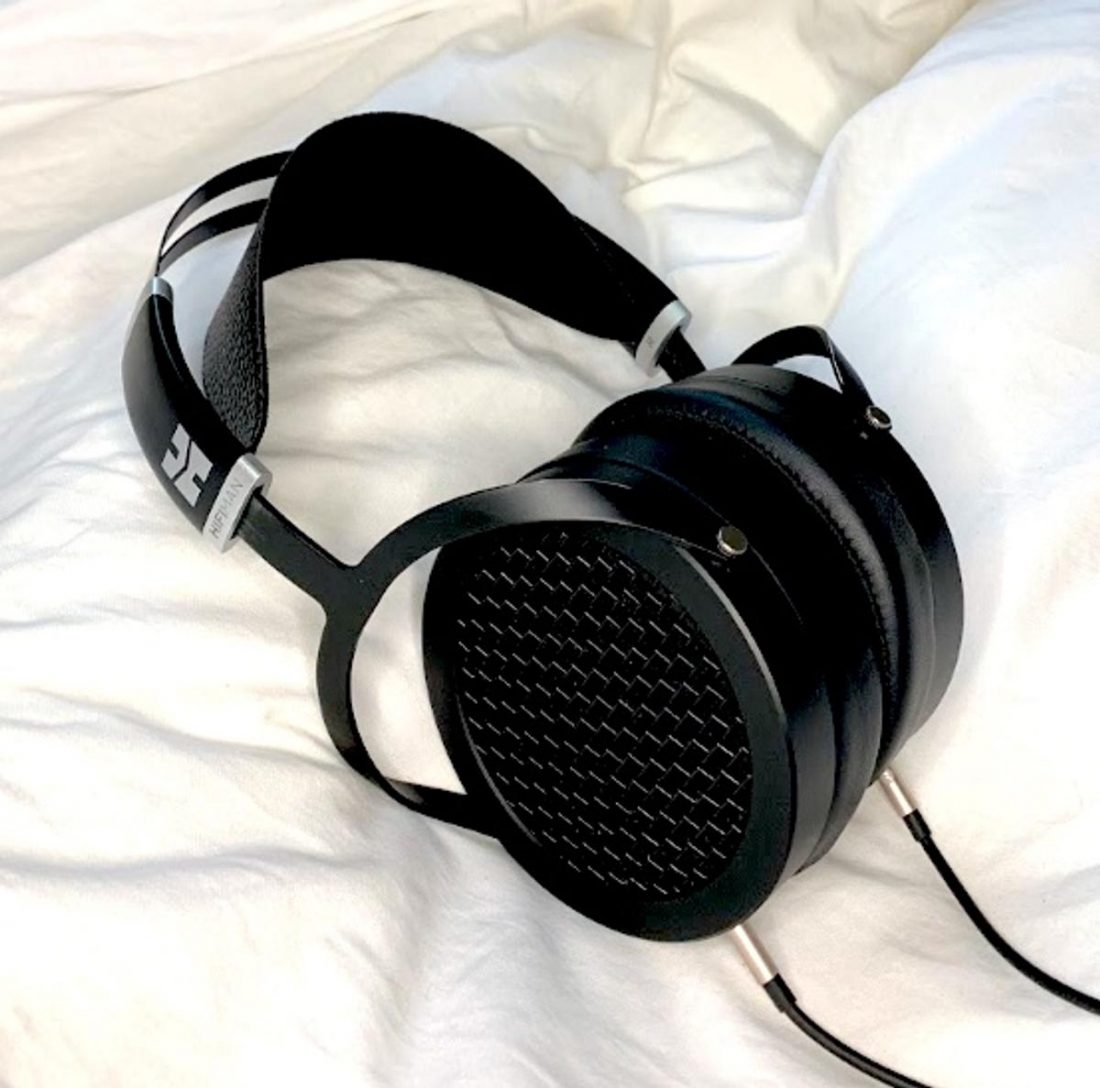One of my favorite musical artists is Tim Hecker, who makes music that is huge and expansive, but also sort of crushingly oppressive, mechanical, glacial, grinding. He’s a good producer, so his music sounds good through many different kinds of headphones. But when I first listened to his album Ravedeath 1972 played through the Hifiman Sundara while standing in the mid-fi aisle at the famed E-earphone in Akihabara, I heard a kind of synergy between music and equipment that was entirely new to me. I was amazed, almost to the point of tears. That was still relatively early in my audiophile journey, and I’ve since gotten a bit harder to impress, a bit less susceptible to “audiophile magic.” But I was left with a pervasive desire to eventually get my hands on the Sundara, and a few months ago, I finally did. Since the unit I’m reviewing is mine, I can successfully evade certain suspicions that I’m being encouraged by a distributor or manufacturer to give a positive review for some kind of monetary gain. Unfortunately, that suspicion should, if you’re a conscientious reader, be replaced by a greater suspicion that my sentimental attachment to the Hifiman Sundara will erode my judgment. But I’ve striven to be as unbiased as possible here, covering both the positive and negative aspects of owning the Sundara.
Technical Specifications
The most notable new feature of the Sundara is its ultra-thin diaphragm – 80% thinner, to hear Hifiman tell it, than the diaphragms of its successors, the HE-400i and HE-400s. This should, to hear Hifiman tell it, allow the drivers to “produce tremendously low distortion levels yet offer a highly dynamic response.” The distortion levels of the Sundara are indeed relatively low. It boasts the typical low impedance and low-ish sensitivity of a planar headphone, meaning it won’t be the easiest to drive, but more on that later.
Frequency response: 6Hz – 75kHz Impedance: 37 ohm Sensitivity: 94dB/mW Weight: 372g Connector: 2×3.5mm
Build
The Sundara is reputed to have a build that easily crushes previous budget Hifiman ‘phones, especially including those the Sundara replaces (the HE-400 series). These impressions are partially correct and partially incorrect. While an ideally-built Sundara would certainly be a nice product, the Sundara, unfortunately, finds itself plagued with the typical Hifiman quality-control issues. First of all, the driver failures. These should give pause to anyone who wants to buy a Sundara, although in my case it wasn’t pause enough to prevent me from hitting the “confirm order” button. Drivers do fail. What about me? The drivers, while the channels are relatively well-matched, exhibit a curious whine at specific higher frequencies, indicating some artifact of the poor construction within the sound – but it’s not audible when listening to music. At least, not usually. The cable broke after about a week of ownership (not due to my mistreatment, mind you!), necessitating the purchase of an aftermarket one for about $20 – a much better cable. And the headband adjustment on one side is rather loose, while the other side is so tight that all the paint was rubbed off the adjustment mechanism within a few days.
Comfort and Looks
The Sundara is reputed to be a relatively stylish headphone, and I do like the way the earcups look. They’re very nice and circular, and the minimalist design hits all the right cues – it’s perhaps a bit less special than something like Audio-Technica’s Air Dynamic series, but it certainly looks relatively nice. That headband, on the other hand, is kind of a different story. I don’t like the little silver accents that clumsily strike a horizontal line across the otherwise vertically-oriented headband. And where it says “Sundara,” I’d rather it not say anything at all – it really does mess up the minimalist design of the earcups. I trust that the new headband easily beats the previous designs in terms of comfort, but in terms of looks, I’m not sold. But I do find the Sundara very comfortable – not too heavy, not too clampy, with a headband that does better at avoiding pressure points than practically any other headband I’ve tried. Others have mentioned the cups’ refusal to rotate laterally. I don’t find it to be a problem, but some people, historically, have. To me, though, these are some of the more comfortable headphones on the market.
Sound
Have you ever had shaved snow? Like shaved ice, but more “refined” – you get with red bean or mochi, and the ice really is arranged in tiny, tiny crystals that both give a sort-of textured crunch and then almost immediately disappear entirely. That’s what the Sundara sounds like to me, and more importantly, it’s the kind of headphone that lends itself to that kind of metaphorical description, at least when paired with the right music. As for me, the Sundara is right up my alley, handling many of the genres that I consider close to home supremely well. Classical, ambient, and drone are some of the genres that suit the Sundara best, with the Sundara bringing what Tyll Hertsens calls an “inviting and pleasant softness to the sound” while boasting the resolving power necessary to play even the busiest orchestral passages. What the Sundara has in speed and resolution, however (at least in the midrange – we’ll get back to that later), it may somewhat lack in dynamics. The Sundara is not impotent, especially compared to older headphones, and when provided a sufficiently bombastic recording it can still bring out a lot of color. But it always treats music with a gentleness that, when fed grunge or punk or metal, can easily transform into a thin, brittle, unsatisfying sound.
Bass
The Sundara’s bass is unobtrusive in what can be a good or a bad way. While not as indulgent and textured as some of its planar siblings (Audeze comes to mind), it is relatively well-extended, fast, tight, and neutral – the Sundara is not a muddy headphone. When called to perform, the Sundara can provide a nice, reverberant thump, but it will always be a very clean thump, perhaps even a polite one. Some may even think it too clean. To an extent, I might include myself in those ranks – the lack of any midbass hump (typical of dynamics) can seem to rob it of a bit of the organic warmth required to really deliver an uncannily natural rendition of acoustic music. Very briefly, the word “sterile” came to my mind, but no. Perish the thought! When one buys the Sundara, one is paying for a massage, not a boxing match.
Mids
The Sundara is quite linear up to 1000Hz, after which there is a very broad, relatively subtle recession spanning until about 3kHz-ish. The result of this is a midrange that is a bit laid-back, very smooth (no shoutiness to speak of), and perhaps a bit cold. By “cold,” I don’t mean to suggest that the Sundara is thin or lacking body. Nor am I referring to coldness as in the phrase “left me cold.” What I mean is that I am often set slightly at a distance from music that demands warmth and intimacy – not in the sense of a wide, expansive soundstage, but there is something that keeps me at arm’s length from a truly “organic” experience. With some music, this icy quality can be truly glorious. Tim Hecker’s “7000 Miles,” for example, sounds better on the Sundara than on any other pair of headphones I own because of the sort of drafty, cathedral-like quality of the Sundara. The same is true of, say, Bach organ chorales – the Sundara is perfect for that, too. And I should really mention the speed here. The blistering speed of the driver (remember, the driver is a big selling point here!) combined with the laid-back frequency response means that the mids of the Sundara are exceptionally smooth and not fatiguing at all. The flip side: the smoothness of the Sundara’s mids, while it can be a very nice quality, does come about at the cost of a loss of “detail” in the upper mids. Don’t get me wrong – the Sundara certainly has the ability to resolve most everything that comes its way, but it’s not always going to be starkly evident. Take, for example, the clock all the way in the left of the studio in Mark Hollis’s “A Life.” With, say, the AKG K400, with its forward upper mids, the clock is impossible not to notice. With the Sundara, I’m not sure I would have noticed it if I didn’t already know it was there.
Treble
It’s the treble, more than the mids and bass, that belie the Sundara’s status as one of the budget members of Hifiman’s lineup. The frequency response of the treble is relatively smooth – at least it’s not as mountainous as, say, the rollercoaster that is AKG or Beyerdynamic treble. Instead, the Sundara’s treble (at least, on my unit) is dominated by a relatively broad boost around 10kHz. My unit sort of has this camelback-shaped formation with slight peaks at 9kHz and 11kHz, and a broad elevation in between. While this can sometimes be unpleasant, it can also check that “sparkly” box that some audiophiles love so much – and it’ll do it without falsely inserting a giant middle-finger peak in the middle of your precious treble response. The Sundara is bright, certainly unnaturally so, but at least it does brightness relatively gracefully. Unfortunately, the Sundara also exhibits a bit of a speed problem right around the 11kHz zone – a problem that’s corroborated by solderdude’s measurements, which indicate resonances around 5.5kHz and an octave higher at 11kHz. The ringing in the lower treble isn’t so much audible to me, because I’m not terribly sensitive in those frequency ranges, but it’s certainly audible in the upper treble, sometimes casting an ugly haze over cymbals. Ground-Zero’s Consume-Red, for example, ends in a nearly 30-minute assault of constant cymbal crashes. Heard through the Sundara, these cymbal crashes are quite bright, and also clearly hazy and blurred-together. Detail in the treble becomes hard to make out because of the ringing here. The grain in the Sundara’s treble response (very mild, by the way) isn’t a deal-breaker for me, especially as most of the genres that bring this issue to light are better-suited by other of my headphones for other reasons. You won’t run into these issues with most ambient, or classical, or jazz, or any of the other genres with which the Sundara excels. For these genres, the Sundara treble is sufficiently detailed, airy, and gorgeous. Besides, this is a $350 headphone. If the treble were perfect, customers wouldn’t need the Ananda, or the HE-1000. Given what it is, and all its other strengths, the treble is more than forgivable. There are some other characteristics of the Sundara that are perhaps less forgivable, but I’ll get back into those in my conclusion.
Soundstage
The Sundara’s soundstage is natural, with relatively precise imaging and good instrument separation. It doesn’t typically get congested – although the treble can get a bit blurry in very bright recordings, most sounds seem to hold their particular positions in space, even during fast or loud passages. The soundstage itself is restrained and more or less headphone-like, but very natural. It brings in the width a bit, allowing it to maintain a more cohesive, spherical shape than some others that bring a wide stage that lacks height. Well, the Sundara certainly doesn’t lack height. Though it may not sound as vertically monumental as some of Hifiman’s other headphones – specifically though with the HE-1000 form factor – the Sundara does handily outdo most dynamic headphones in soundstage height. After all, the driver membrane spans practically the whole height of the headphone’s earcups. Overall, the Sundara has good imaging, but the soundstage is far from its most notable category. But if you crave that sudden out-of-your-head moment, the “what-was-that-on-the-other-side-of-the-room” sensation, the Sundara is certainly up to the task.
Amplification
The literature included in the Sundara’s packaging advertises the Sundara as an “easy-to-drive” headphone, and this is partially true. One on hand, driving the Sundara with your phone will mean that they’re underpowered, and this will probably be sort of evident – you’ll perhaps be missing a level of dynamic impact that you’d have running off a more powerful amp. They aren’t the most sensitive headphones, after all. But, although the Sundaras are scalable, they really do sound remarkably pleasant even when under power. If I plug my K712s into my phone, they sound weak and thin and unpleasant. Recently, I tried running the Hifiman HE-5SE off my phone, and it sounded like dog crap. The Sundara, on the other hand, maintains its soundstage and its general majesty driven by my phone, even if I have to have my volume almost at max to get there. Not that I’m advocating buying the Sundara without an accompanying willingness to pursue dedicated amplification – they definitely do benefit from high-quality power. But if anyone tells you that the Sundara simply demands amplification, especially costing thousands of dollars, run fast and never look back.
Conclusion
At this price point, one can find headphones that are different from the Sundara, but one would be hard-pressed to find one that’s inarguably better, except maybe on the used market. The Sundara adheres to the typical Hifiman house sound of laid-back, slightly chilly mids, boosted treble, and tight and well-extended but certainly not overwhelming bass. The treble is, as far as I’ve heard, an improvement over Hifiman’s previous budget models, but still has a bit of a sizzle to it that can get irritating on particularly brightly-mastered tracks. Despite all that, Hifiman still hasn’t managed to pry loose the old thorn in their sides that is quality control. Driver failures abound, and the manufacturing quality of their headbands still varies wildly. These issues seem to be commonplace enough that some dealings with Hifiman customer service should perhaps even be anticipated. And you can go ahead and buy an aftermarket cable right off the bat – the included one is no good. But I’m going to end this review positively, because of course, I really like the Sundara. Based on the sound alone, I have no problem wholeheartedly recommending the Hifiman Sundara to anyone who’s in the market for a smooth, laid-back, inviting headphone, who doesn’t need anything with a huge amount of bite. The Sundara does lovely things for a headphone of its price, and I think it’s something any audiophile should check out.
